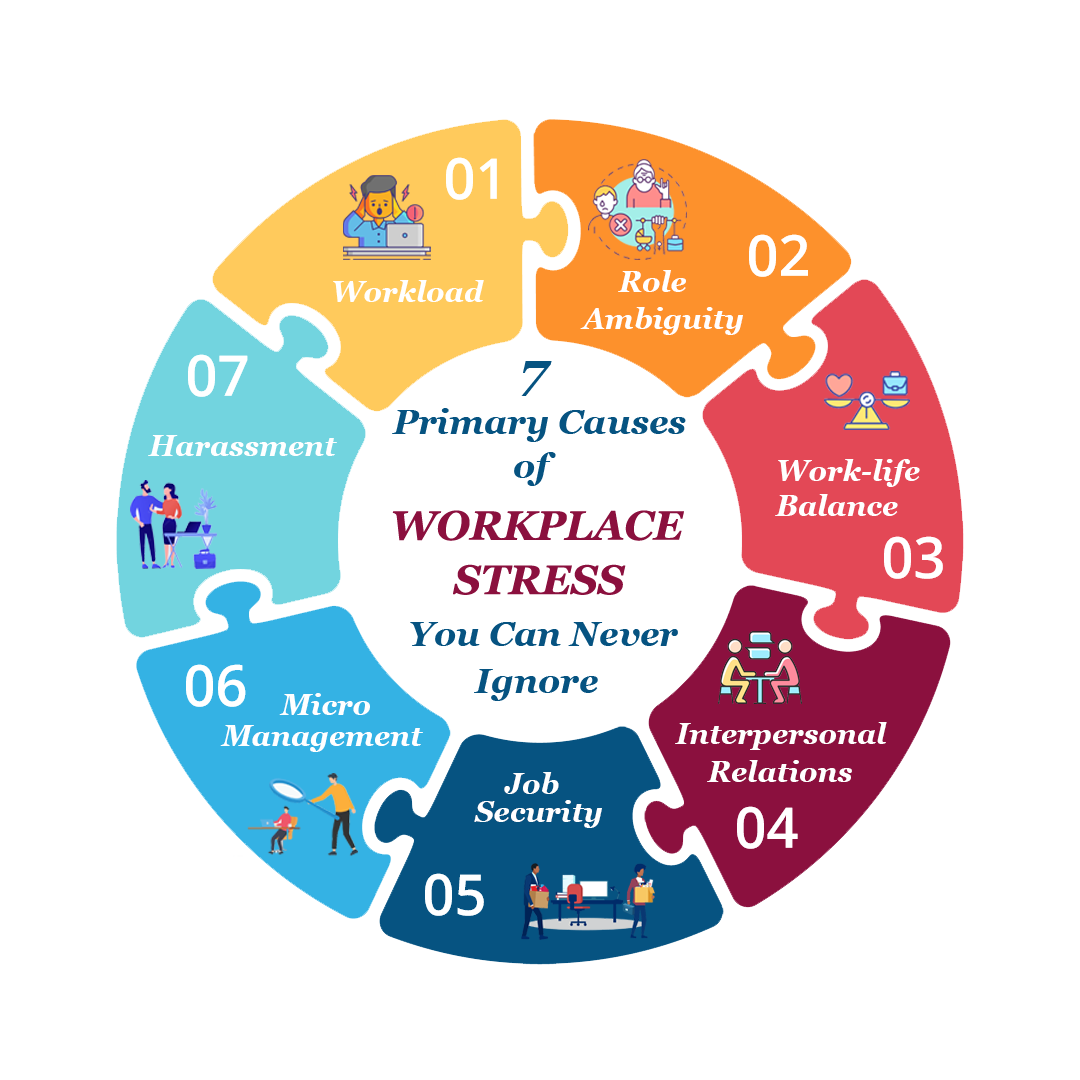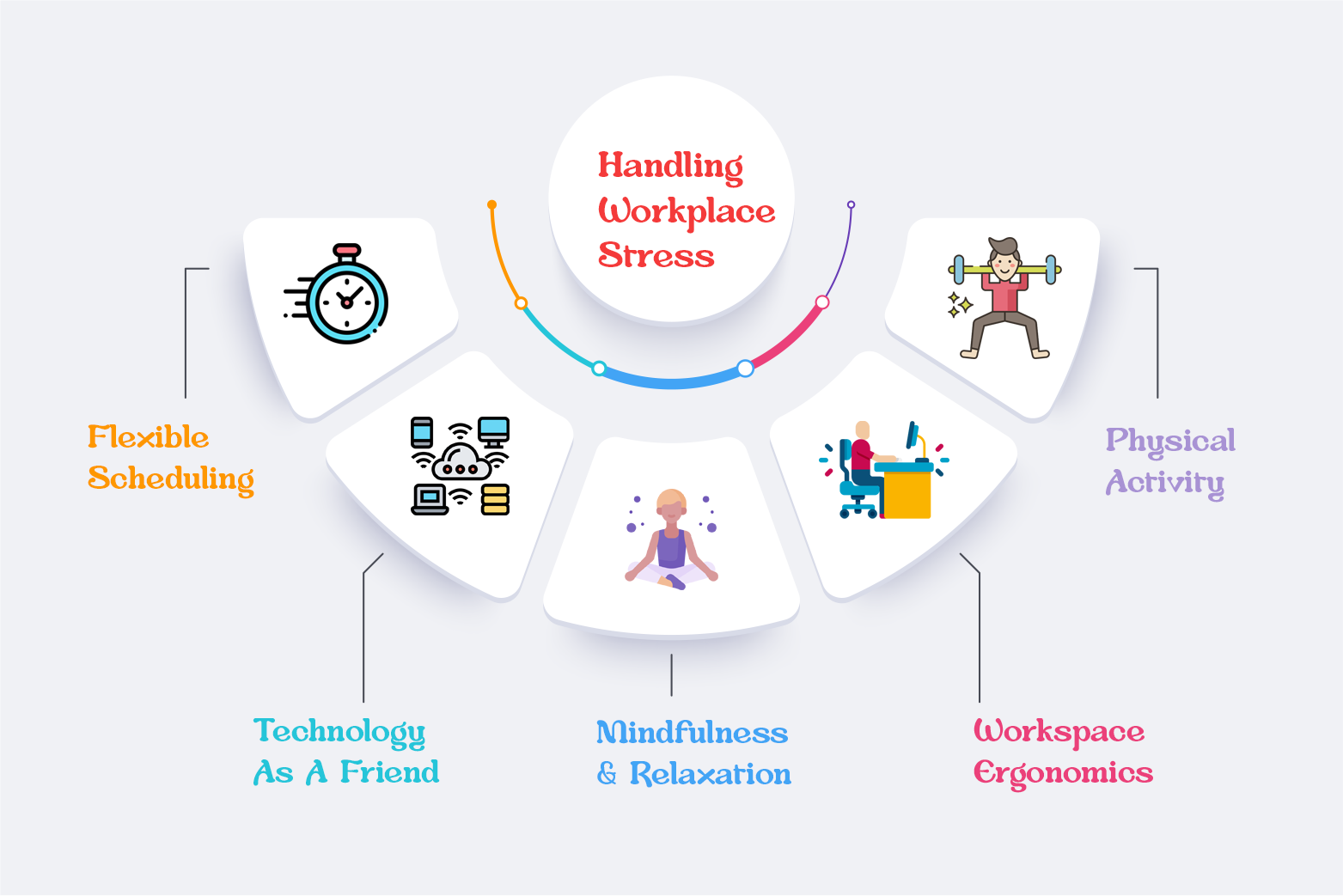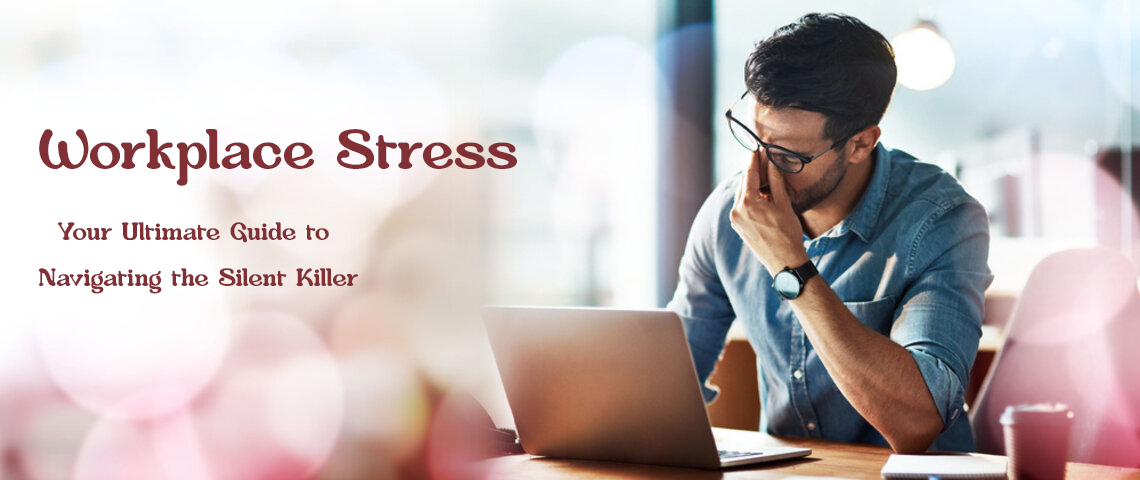Have you ever felt tired and frustrated from your job? If the answer is ‘yes,’ don’t worry, since you aren’t alone in this. Today’s generation feels it likewise and the hybrid work culture post-Covid-19 further elicited the whole hubbub revolving around anxiety, workplace stress, and everything under the umbrella.
According to the American Psychological Association (APA), nearly 71% of US millennials experience compounding feelings of anxiety, depression, stress, and more in their professional life, triggering the need to maintain a proper work-life balance.
We as human beings are constantly under pressure to outperform at work which impacts our mental and physical well-being. It’s common across age groups and yet the irony is – people still fail to acknowledge and understand the topic. Teenagers, especially, are often seen and heard asking their friends and elders questions like:
- What is workplace stress and how do we define it?
- What are the primary factors that induce stress at work?
- How can you identify the tell-tale signs of experiencing stress and anxiety while working?
- What steps can you take to cope with stress, anxiety, etc?
Through this blog post, I intend to answer these questions and talk about different actionable coping strategies that you can leverage to better address your mental dilemma and subsequently avoid workplace stress.
So, without further ado, let’s get started right away:
Workplace Stress Management: Understanding the Term & Its Basics
No two individuals are alike, and neither is their mental well-being. We all have a different caliber to feel and manage inner turmoil and simultaneously handle workplace woes. So, it’s imperative that we understand and get the basics right before jumping into the deeper aspects.
Before we talk about the underlying reasons that are responsible for work stress, let me help you understand the meaning of the term itself:
Workplace stress is a psychological and physical response to a demanding work environment or job-related pressures that can negatively affect your well-being and performance.
According to various medical experts and mental health experts, stress during work triggers due to the following reasons:
- Heavy workload and tight deadlines
- Conflicts with colleagues or superiors
- Job insecurity or uncertain prospects
- Long working hours or overtime
- Lack of support, recognition, or feedback from the management
So, the best way to combat the unspoken feeling of stress in the workplace is to understand these factors and your true nature as an individual.
According to the World Health Organization, nearly 15% of working adults suffer from mental disorders, which obligates us to take our overall well-being seriously. It also gives us multiple reasons to identify practical ways to manage stress in the workplace and avoid burnout.
Medical experts often club all these tips and tricks, wellness programs, and theoretical frameworks to minimize and manage workplace stress under one umbrella term, dubbed workplace stress management.
Staying fit mentally and physically correlates with overall productivity, and organizations have now realized the connection. So, they have already started revamping their workplace policies, formulating actionable strategies, and deploying them to help employees cope with work stress and avoid burnout.
Primary Causes of Workplace Stress: 7 Underlying Reasons You Cannot Ignore
Different studies and research over the years summarize that for every individual, the triggering point for work-related stress can vary. However, according to renowned medical experts, these are the 7 primary factors that trigger work stress in most individuals:

Workload
Getting overburdened beneath your daily workload is a common trigger point for workplace stress. When you feel overwhelmed by your job responsibilities and are unable to keep up with the stringent deadlines, your stress levels may increase negatively affecting your mental and physical health.
Role Ambiguity
Not having a clear understanding of your job responsibilities or what the firm expects out of you can create role ambiguity. The situation worsens when you’re assigned tasks requiring certain skill sets, but doesn’t provide necessary on-the-job upskilling.
Work-life Balance
Failure to balance your work with your personal life can make you miss on personal commitments, spend long hours at work, and subsequently make you feel overwhelmed and stressed.
Interpersonal Relationships
Work-related disputes or unavoidable office politics can onset stress within several folks. Poor communication skills with no social support can further aggravate the problem indirectly hampering your well-being.
Job Security
As per Business Standard’s article, almost 89K+ employees have been laid off in 2024 alone. This looming uncertainty about the job with constant organizational changes can often trigger workplace stress, which may convert into other physical and mental health issues.
Micromanagement
If your reporting manager or supervisor constantly monitors and micromanages your work, it may heighten your stress levels and you may constantly feel about doing something wrong. The fear of getting scrutinized, disempowered, and unsupported may leave you with less autonomy over your work and you may feel frustrated and unmotivated at all times.
Harassment
Harassment can take many forms, including sexual harassment, racial harassment, or bullying. If you’re getting harassed at work by a superior or anyone, it can create a hostile and stressful work environment.
Remember: It’s important to note that feeling stressed about a particular situation or an event is one thing while experiencing stress at your workplace is another. The latter builds up gradually, unknowingly gets enrooted within your personality, and makes you suffer.
So, what is the solution? How can you identify the tell-tale signs and resolve them?
Let us find the answers to these questions in the following segment.
Tackling Workplace Stress: Achieving the Impossible
Handling workplace stress can be quite a challenge, especially in today’s hybrid work environment. So, if you or anyone in your vicinity is experiencing one, utilize these 5 actionable tips to manage and reduce your stress effectively:

Embracing Flexible Scheduling
Make use of project management tools like Asana or Trello to prioritize your daily tasks. Create a to-do list each morning and rank tasks by importance and urgency to stay organized and reduce overwhelm.
Another good approach is to set clear boundaries and stick to them. Communicate your working hours clearly across the team to avoid meddling with your time later. This creates a balance between your work and private life – a necessity in today’s hybrid work culture.
Using Technology As Your Friend
Platforms like Slack and Microsoft Teams facilitate seamless communication across enterprises. They help ensure that all stakeholders across cross-functional teams are on the same page, reducing the stress caused by miscommunication or lack of information.
You can even consider scheduling periodic virtual meetups using Zoom/Google Meet to minimize isolation feelings and engage in informal conversations. These non-work discussions strengthen and open up dialogue between peers and alleviate stress.
Mindfulness and Relaxation Techniques
Use apps like Headspace or Calm for quick, guided meditation sessions during breaks, or incorporate 5-10 minute meditation sessions into your daily routine to help manage stress levels and improve focus.
Start your day with yoga or breathing exercises to instantly uplift yourself and reduce stress. As per medical experts, techniques such as deep breathing or the 4-7-8 breathing method can also help calm your mind and reduce anxiety.
Workspace Ergonomics Matter
As we all are mostly working in a hybrid setup, it’s important to invest in a proper work setup for home. Investing in a proper ergonomic chair, and a monitor. combined with a sit-stand desk can save you from long-lasting physical pain. Experiencing any discomfort while working can trigger back pain, and elevate your stress and anxiety levels, so proper workspace ergonomics matter.
Another notable change that you must make is – keeping your workspaces decluttered. The cleaner your workstation is, the less stressful it is for you. A tidy setup with minimal distractions can keep you more in control of your surroundings, elevate your focus and productivity, and help with stress management.
Promote Physical Activity
We all are living a sedentary lifestyle – a significant root cause for anxiety and stress in most of us. So, identify ways to introduce short workout sessions within your lifestyle using apps like Strava, and 7-Minute Workout and improve your overall well-being.
You can even walk while you’re in the office and conducting meetings. Though it may look unprofessional, however, combining productivity with physical activity can help break the monotony of sitting at a desk all day and provide a refreshing change of pace.
Conclusion
Workplace stress is a common challenge in today’s hybrid work environment. Understanding its causes, such as heavy workloads and role ambiguity, is crucial for effective stress management. By embracing flexible scheduling, leveraging technology, and other actionable steps shared above, you can significantly reduce stress levels and give yourself a supportive work environment.
How do you usually handle workplace stress? Share your thoughts in the comments below and let’s build a healthier, stress-free workplace for everyone.



